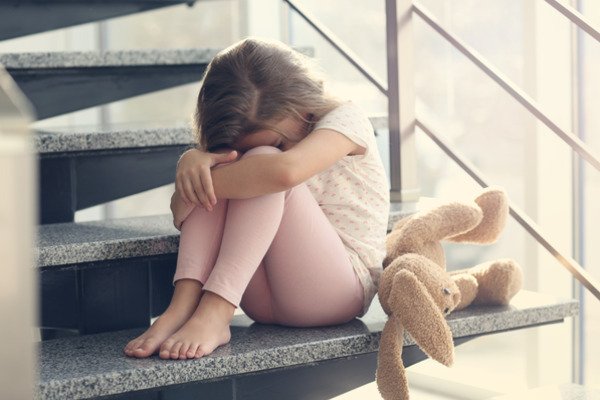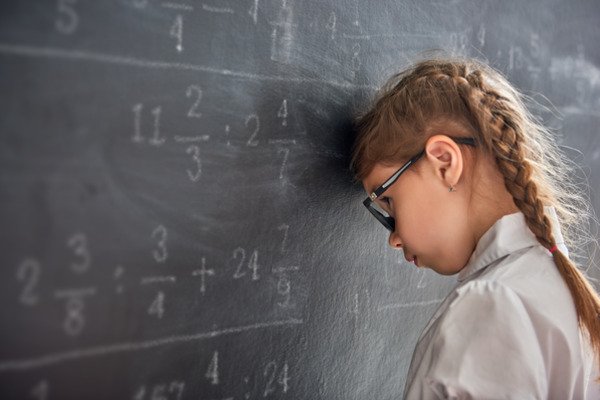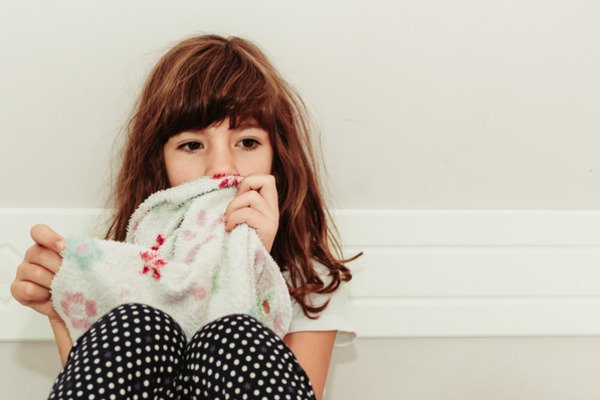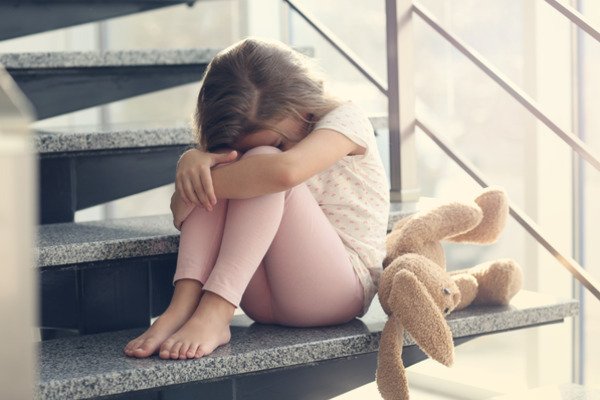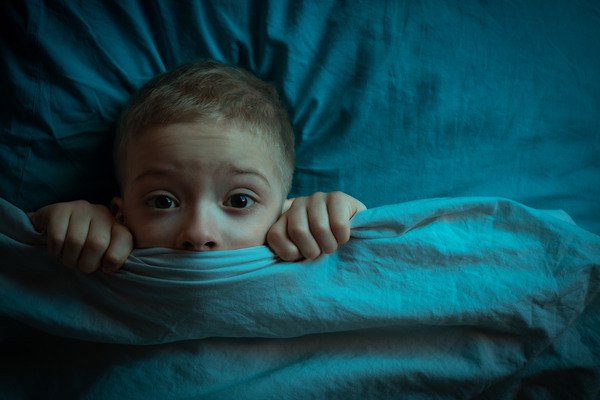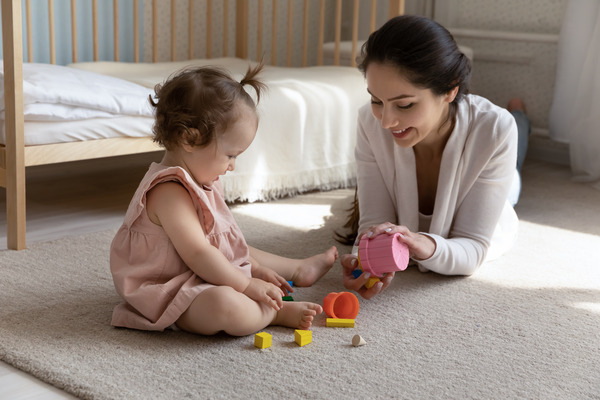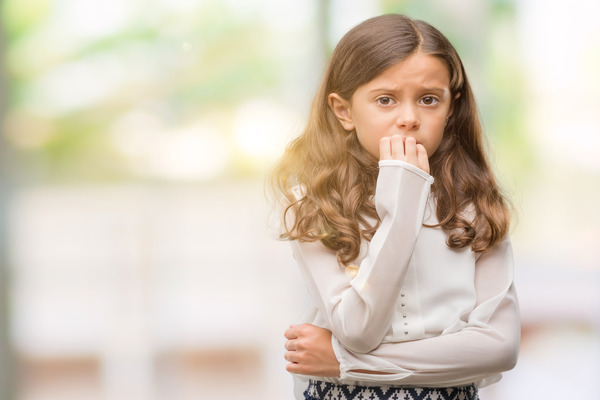Do you think your child has childhood anxiety? Anxiety in children is something very difficult to identify and greatly influences the development of children. It is important to detect it in time.
The anxiety in children It can present itself in various ways that end up going unnoticed by parents. But in these cases it is vitally important to try to detect it in time before it can affect the development of the little ones.
How to detect childhood anxiety?
Detecting anxiety in children is much more difficult than in adults. The reason is that most children do not have an adequate vocabulary or introspective capacity to be able to correctly express what happens to them (nor do many adults). In this way, they can recognize that they are not feeling well since they generally know how to express their emotions. Therefore, in the childhood anxiety It is vital to pay attention to the signs that children leave us in order to detect it and treat it in the shortest time possible.
Furthermore, the attacks of anxiety in children Not only do you work with them, but parents must also participate in their treatment. In fact, many times childhood anxiety is closely related to the parental figure.
Characteristics of childhood anxiety
Many people confuse both fear and phobia with anxiety in children These three terms often tend to be used as synonyms to refer to a series of symptoms of discomfort that the person experiences at a given time, but you must know that they are not the same, nor are they even part of a continuum. It is for this reason that it is important to know how to differentiate and identify them, especially because it will help us to know our little ones a little better and to be able to interpret a little better the signals that they may leave us in these cases.
- Fear: Most children experience many different fears throughout their development. These fears are usually of low intensity and are also associated with a certain age. They are generally temporary and end up disappearing spontaneously. These fears are normal, they help the person develop motor and cognitive coping skills. In this way, they are in turn healthy, since they give the child the opportunity to learn to deal with difficult and stressful situations. They are what is known as “evolutionary fears” and have a specific function linked to each age. When we have a problem is when one of these evolutionary fears lasts until an age that does not correspond. That is, at 6 years old it is normal for a child to experience fear that witches or ghosts may exist, however at 14 years old it is no longer considered “normal” to suffer from this fear.
- Phobia: So that he childhood fear To be considered phobic, it must have two characteristics: It must be disproportionate to the situation that triggers it. That is, the fear is irrational, the child is usually scared by harmless things such as the dark, mice, etc. That its high intensity means that the child engages in maladaptive behavior, behavior that is not appropriate to the demands of the situation.
- Anxiety: The childhood anxiety It is generally a normal and adaptive response that prepares our body to react to a dangerous situation. Unlike what happens with fear and phobia, in the causes of anxiety it does not seem that the person knows what exactly is the reason that triggers it. Therefore, children recognize that they are restless but do not know why.
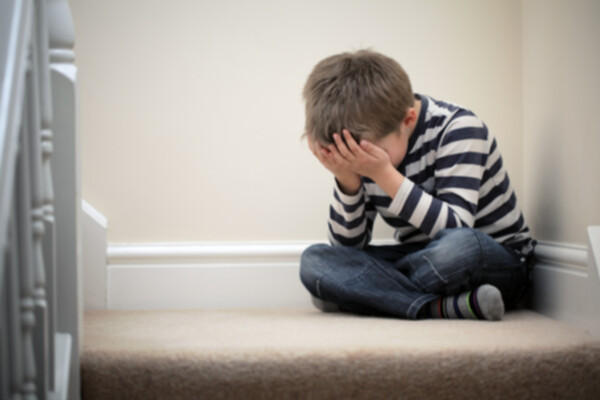
Anxiety symptoms in children
Even though the stages of anxiety in children They are very difficult to detect, there are some symptoms that can reveal that we are facing a case of this type of pathology. Generally, when we find an anxiety disorder in children we find the following signs.
- They find it difficult to concentrate
- They wake up from nightmares
- They do not have good eating habits
- Sudden anger and loss of control
- Constant worries and negative thoughts
- Muscle tension and frequent use of the bathroom
- Cry on many occasions
- Complaints of upset stomach
When children present many of these symptoms, we could say that we are facing a case of childhood anxiety
Causes of childhood anxiety
The anxiety It is a natural response that we are all born with. Problems with it are created when the body and mind interpret many situations as dangerous that in reality are not. That is why there are people who have some experiences that make it easier to interpret danger at certain times. In this way, anxiety in children can influence their development. Therefore, it is vitally important to know its causes and detect it in time.
- Biological factors : The brain secretes certain special chemicals when it is faced with a dangerous situation. Among them, neurotransmitters such as serotonin and dopamine influence the onset of anxiety There are some genetic factors that make children more likely to exaggerate this response in some situations that may be considered socially or psychologically dangerous.
- Family factors: Children are greatly influenced by their environment. So much so, that many times anxiety in parents ends up affecting children. Therefore, this may be one of the causes of childhood anxiety
- Environmental factors : Traumatic experiences (such as divorce, illness or the death of a family member) can trigger the appearance of a anxiety disorder in children
Types of childhood anxiety
In the same way as with anxiety in adults, there are various types of childhood anxiety
- Generalized anxiety disorder (GAD): In these cases of childhood anxiety It can be identified by the excessive worries that children suffer. Furthermore, children with GAD tend to be very hard on themselves and strive with all their might to achieve perfection.
- Panic disorder: This type of childhood anxiety It is characterized by continuous episodes of panic. These anxiety attacks in children occur in an unexpected way. So much so that children end up worrying about these attacks and even become obsessed with them.
- Separation anxiety disorder: One of the types of childhood anxiety The most common is separation anxiety disorder. In these cases, children experience anxiety when they lose sight of their parents. This reaction can be normal when the children are very young, but it becomes a problem when it continues into age.
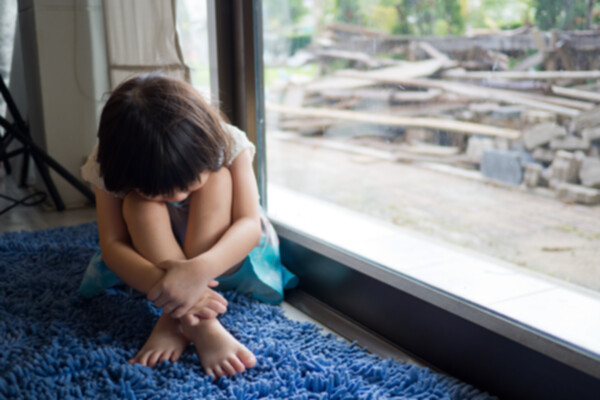
- Social phobia or social anxiety: The anxiety in children It can also appear due to fear of certain social activities. So much so, that the most common thing about this childhood anxiety is to suffer it on certain school occasions (such as going out to the blackboard or starting a conversation with a classmate). This type of anxiety in children can affect their development and the children’s relationships.
- Selective mutism: When children refuse to speak in certain situations, so much so that it interferes with their school activity and making friends, we can say that it is childhood anxiety Children who suffer from selective mutism end up remaining motionless and expressionless at times where they are expected to talk to others.
- Specific phobias : We are talking about a specific phobia when children experience an irrational fear of a situation, living being or object. Children’s anxiety in these cases appears when they try to avoid certain situations or things they fear.
What to do if your child suffers from childhood anxiety?
When a baby cries, his parents know that he is probably hungry, tired, sick, or for another reason that is easier to identify. As the child gets older, parents have more difficulty identifying the cause of their worries, insomnia or discomfort. When a child reaches elementary school age, a parent may find that their child is clingy, tense, or withdrawn. Instead of being relaxed and able to play with other children, a child may seem irritable or unhappy.
As a parent, if you are worried about whether something is a normal reaction or a childhood anxiety disorder , it is recommended to consult a psychologist. If your child really needs professional help, the psychologist will help him understand what happens in his body when he becomes anxious, become aware of his thoughts and behaviors, and teach him how to challenge his worries and apply strategies to better cope with situations. and feel comfortable again. The sooner a child receives help, the sooner he or she can regain a sense of well-being. No child should go through life feeling stressed, worried and anxious without access to help to cope.

